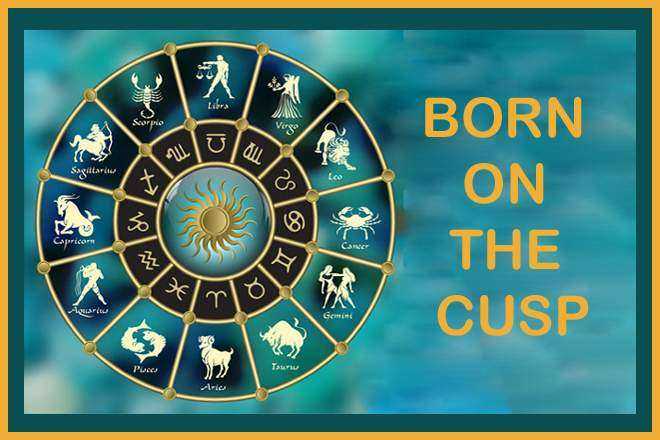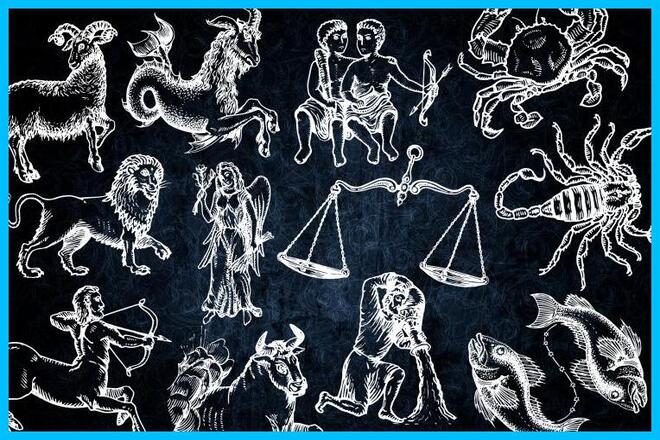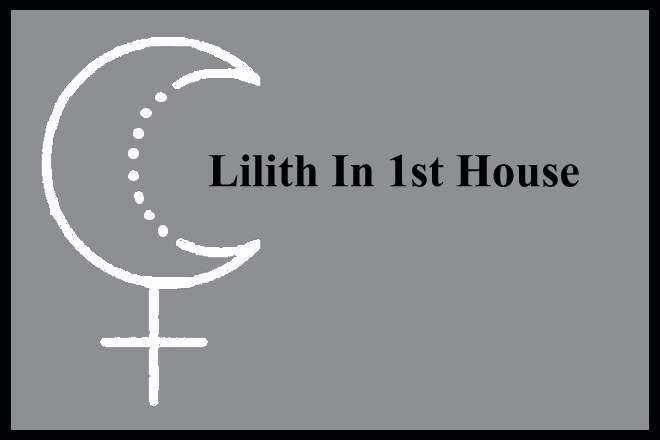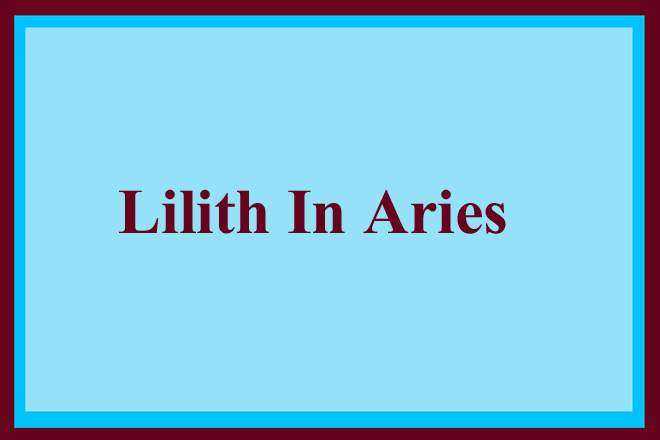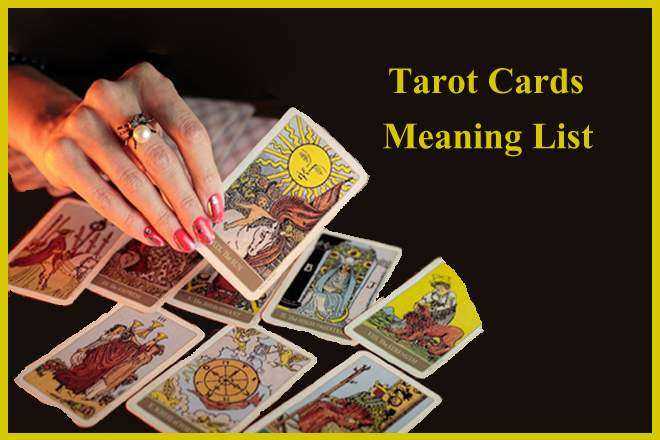Lilith, Who Is Lilith From The Bible, Who Was Lilith In The Bible, Is Lilith In The Bible, Where Is Lilith In The Bible, What Does Lilith Symbolize?
Lilith Overview
Lilith is a Jewish folkloric female evil entity. Her name and personality are taken from the Mesopotamian demons known as lilû (feminine: liltu), which means “night monster” in English. Some Jews practiced worship related to Lilith as late as the 7th century CE. Wearing an amulet with the names of certain angels was thought to prevent the evil she threatened, especially against children and women in delivery.
Who Is Lilith From The Bible, Who Was Lilith In The Bible
Within Jewish legend, Lilith is a highly divisive figure. Lilith’s name does not exist in the Torah’s genesis tale, although she does appear in various midrashic passages. Jewish scholars, feminists, and other intellectuals dispute her symbolism, history, and literature. Lilith has several origin myths, but the most popular one portrays her as Adam’s first wife. According to the “first Eve” myth, Lilith was created from dust by God and placed in the garden with Adam until issues developed when Adam attempted to exert dominance over Lilith. According to legend, Lilith refused to sleep beneath Adam during sex. She believed that because they were both made of earth’s dust, she shouldn’t have to lie beneath him. Lilith left the Garden of Eden to secure her independence after Adam disagreed. When Adam informed God that Lilith had departed, God dispatched three angels to rescue her: Senoi, Sansenoi, and Sammangelof. Lilith was discovered in a cave with children by the three angels, but she refused to return to the garden. For her defiance, the angels threatened to kill 100 of her children every day. She is claimed to take children’s lives as a kind of retaliation and is responsible for stillborn babies and crib deaths (SIDS).
Male children are vulnerable to Lilith’s wrath for eight days after birth (until circumcision), whereas female children are vulnerable for twenty days. Lilith agreed not to kill children who had amulets of any of the three angels, even though she snatched children’s lives in the middle of the night. Lilith attempted to return to the garden after the angels had left, but she discovered that Adam had already married Eve. Lilith had intercourse with Adam while he was sleeping and “stole his seed” as a form of vengeance. She bears ‘Lilium,’ earth-bound demons, to replace her children, who were slaughtered by angels, with his seed. Males’ romantic dreams and night discharges are also attributed to Lilith. Another story claims Lilith is impregnated, resulting in the birth of other demons through masturbation and utopian dreams.
Lilith – Sign of Power
Lilith’s open-ended character has allowed many organizations to utilize her as a destructive feminine symbol or a sign of female power. Many feminists regard Lilith as not just the first woman but also the first self-sufficient woman. She refuses to be dominated by Adam in the creation tale and quits the garden despite the consequences. She must give up her children to save her freedom, and in revenge, she steals Adam’s seed. Lilith is said to “mount Adam” in one version of the story. This narrative implies that Lilith sexually abused Adam; other story versions depict Lilith as a demon who murders children and preys on men while they sleep. Because it is against Jewish halakhic law to shed a man’s sperm, Lilith takes advantage of this prohibition during masturbation and erotic dreams to replenish her brood.
Even though Lilith is divisive, feminists have exploited her as a symbol of empowerment. One Jewish feminist publication, Lilith, describes itself as an “Independent Jewish Woman’s Magazine.” The title Lilith was chosen by the publishers because she is seen as a symbol of independence. Those who still regard her as a devil, on the other hand, could turn the tables and designate feminists as male bashers or men-haters. They consider Lilith to be a cruel and vindictive woman who preys on men and children. There will be controversy and hostility to every symbol or emblem utilized by feminists, especially in a religious context. The essential issue isn’t whether Lilith’s story is true or not. The “first Eve” version of the myth provides Lilith a place in Judaism and other religious traditions that many women may identify with. She is a strong lady who stands up to the repressive system in which she finds herself. Stealing children’s life reflects a level of craziness that goes hand in hand with her isolation and alienation. Despite her flaws, Lilith remains a powerful emblem of power due to her survival and mystique. She permits women to reinterpret her symbolism and energy inside the tradition since she is open to interpretation.
What Are Lilith’s Children Called
Lilith is alternatively described in rabbinic literature as the mother of Adam’s demonic descendants after his separation from Eve or as his first wife. Unlike Eve, who was created from Adam’s rib (Genesis 2:22), others believe Lilith was the woman mentioned in Genesis 1:27 and made from Adam’s same soil. Lilith fled Adam and the perfection of the Garden of Eden because she refused to be obedient to her husband; three angels attempted in vain to persuade her to return. According to some legends, Samael’s archangel sired her demonic offspring was not Adam’s descendants. Incubi and Succubi are two terms used to describe those children.
Lilith History, Lilith in Religious Books
Although Lilith frequently appears in Jewish folklore and midrash, her origins are as a Sumerian succubus. The first Jewish story about Lilith was told in Ben Sirah’s Alphabet. Before the advent of Ben Sirah’s Alphabet, Lilith was usually seen as a demon rather than the “first Eve.” Lilith has been depicted in a variety of ways in literature and art due to her ambiguity. While some theological experts recognize Lilith as the “first Eve,” others regard her as a demon. Lilith has been shown in art throughout history, from risqué depictions to Lilith in the garden.
Lilith has traveled the world for 4,000 years, appearing in the fabled imaginations of writers, artists, and poets. Her terrible beginnings can be traced back to Babylonian demonology, where amulets and incantations were employed to combat the demonic powers of this winged spirit that preyed on pregnant women and infants. Lilith then traveled to the ancient worlds of the Hittites, Egyptians, Israelites, and Greeks. She appears only once in the Bible as a desert demon avoided by the prophet Isaiah. She returns in Jewish sources during the Middle Ages as Adam’s horrible first wife.
Lilith in Renaissance Period
Michelangelo depicted Lilith as a half-woman, half-serpent coiled around the Tree of Knowledge during the Renaissance. Dante Gabriel Rossetti, an English poet, was afterward captivated by her beauty. “Her magical hair was the first gold,” he wrote. James Joyce, an Irish novelist, portrayed her as the “patron of abortions.”Modern feminists applaud her courageous battle for freedom from Adam. A Jewish women’s magazine and a national literacy program also bear her name. The Lilith Fair is an annual music event that distributes its proceeds to battered women’s shelters and breast cancer research organizations.
Lilith is associated with chaos, temptation, and ungodliness in most versions of her narrative. Lilith, in all of her guises, has cast a spell on humanity. The name “Lilith” comes from the Sumerian term for female demons or wind spirits, liltu, and related ardat Lil. The liltu lives in deserts and open areas, particularly deadly to pregnant women and infants. Her breasts are packed with poison rather than milk. The ardat Lil is a sexually unsatisfied and infertile girl who displays hostile behavior toward young males.
Lilith in Gilgamesh and the Huluppu-Tree
Lilith’s name comes for the first time in Gilgamesh and the Huluppu-Tree, a Sumerian epic poem discovered on a tablet in Ur around 2000 B.C.E. The world’s first literary hero is the strong monarch Gilgamesh, who bravely slays monsters and vainly seeks the secret to eternal life. a Gilgamesh goes to help Inanna, goddess of sexual love and war, in one scene “after heaven and earth had parted, and the man had been created.” Inanna passionately tends a willow (huluppu) tree in her garden near the Euphrates River, the wood of which she plans to shape into a throne and bed for herself. However, Inanna’s efforts are nearly thwarted when a nefarious trio seizes control of the tree. Lilith is one of the villains: “Inanna, to her despair, found herself unable to realize her hopes.” In the meantime, a dragon had constructed its nest at the base of the tree, the Zu-bird had placed his young in its crown, and the demoness Lilith had built her home in its midst.” Brave Gilgamesh kills the dragon while wearing heavy armor, prompting the Zu-bird to fly to the mountains and a terrified Lilith to flee “to the desert.”A clay plaque known as the Burney Relief, which dates from around the same time as the Gilgamesh epic, has been recognized by some historians as the first known graphic representation of Lilith. (Scientists have recently identified the figure as Inanna.) The Babylonian relief depicts her as a lovely naked sylph with bird wings, taloned feet, and hair hidden beneath a hat adorned with numerous pairs of horns. She appears to be bending the lions and owls to her will as she stands atop two lions and between two owls. Lilith’s relationship to the owl, a predatory and nocturnal bird, suggests a link to flight and night terrors.
In early incantations against Lilith, she travels on demon wings, a common form of transit for underworld dwellers. A limestone wall plaque discovered in Arslan Tash, Syria, in 1933, dates from the seventh or eighth century B.C.E. and contains a horrifying mention of Lilith. The tablet was most likely hanging in a pregnant woman’s house as an amulet against Lilith, who was said to be lurking at the door and figuratively obstructing the light. “O you who fly in (the) darkened room(s), / Be off with you this instant, this instant, Lilith. / Thief, breaker of bones,” one translation says. If Lilith saw her name written on the plaque, she would most likely be terrified and flee. As a result, the plaque protected Lilith’s wicked intentions toward a mother or child. Ancient peoples believed supernatural forces were at work during crucial junctures in a woman’s life, such as menarche, marriage, the loss of virginity, or childbirth. A demon goddess, for example, was blamed for the high rate of newborn death. Lilith legends and amulets are likely to have helped generations of people cope with their apprehension. People throughout the Near East became increasingly familiar with the Lilith tale over time. She is only referenced once in the Bible, in Isaiah 34. The Book of Isaiah is a collection of Hebrew prophecies spanning several years; the first 39 chapters, sometimes referred to as “First Isaiah,” can be attributed to the prophet’s period (about 742–701 B.C.E.). Throughout the Book of Isaiah, the prophet encourages God’s people to avoid getting involved with strangers who worship alien gods. In Chapter 34, a sword-wielding Yahweh pursues vengeance on the infidel Edomites, the ancient Israelites’ persistent outsiders and foes. According to this solid apocalyptic poetry, Edom will become a chaotic desert country where wild creatures roam: “Wildcats shall meet hyenas, / Goat-demons shall welcome each other; / There also the Lilith shall repose / And find herself a resting spot” (Isaiah 34:14). The Lilith demon was so well known to Isaiah’s audience that she didn’t need to be explained.
Lilith in Isaiah Passage
The Isaiah scripture does not describe Lilith in detail, but it does place her in desolate locations. As a result, the Bible verse connects Lilith to the Gilgamesh epic’s demon who escapes “to the desert.” The wilderness has always been associated with mental and physical barrenness; it is a place where creativity and life itself can be easily destroyed. Lilith, the feminine antonym of masculine order, is exiled from fertile territory to a barren wasteland. English translators of Isaiah 34:14 occasionally doubt their readers’ knowledge of Babylonian demonology. The poem’s prose adaptation in the King James Bible translates “the Lilith” as “the screech owl,” evoking the frightening bird-like attributes of the Babylonian she-demon. The Revised Standard Version recognizes her nighttime activities. It refers to her as “the night hag” rather than “the Lilith,” although the 1917 Jewish Publication Society’s Holy Scriptures refers to her as “the night-monster.” In the Isaiah chapter, the Hebrew original and its most acceptable translations use “Lilith.” Still, other versions remain faithful to her ancient image as a bird, night creature, and beldam (hag). Lilith is not referenced again in the Bible, but she does appear in the Dead Sea Scrolls discovered at Qumran. The Qumran group was obsessed with demonology, and Lilith occurs in the Song for a Sage, a hymn probably used in exorcisms: “And I, the Sage, sound the majesty of His beauty to terrify and confound all the spirits of destroying angels and the bastard spirits, the demons, Lilith…” The Qumran society was undoubtedly familiar with the Isaiah text, and this liturgical Dead Sea Scroll echoes the Bible’s vague portrayal of Lilith. (Lilith may also be mentioned in a second Dead Sea Scroll.) (For further information, see the next article in this issue.)
Centuries after the Dead Sea Scrolls were written, learned rabbis completed the Babylonian Talmud (final editing about 500 to 600 C.E. ), even female demons ventured into Jewish philosophical investigations. The Talmud (named after a Hebrew term that means “study”) is a collection of legal disputes, stories about prominent rabbis, and musings on Bible passages. There are few Talmudic references to Lilith, but they provide insight into what intellectuals felt about her. Lilith in the Talmud is reminiscent of earlier Babylonian depictions, as she had “long hair” (Erubin 100b) and wings (Niddah 24b). The Talmud’s description of Lilith also reflects earlier perceptions of her as a succubus, a female demon who had intercourse with men while they were sleeping. Lilith is associated with harmful sexual activities because she powerfully embodies the demon-lover myth. According to one Talmudic text, people should not sleep alone at night for fear of Lilith slaying them (Shabbath 151b). According to the Talmud, a heartbroken Adam distances himself from Eve during the 130-year gap between Abel’s death and the birth of Seth. During this time, he fathers “ghosts, male demons, and female [or night] demons” (Erubin 18b). Those who attempt to build the Tower of Babel are transformed into “apes, spirits, devils, and night-demons” (Sanhedrin 109a). Lilith is the female night demon.
When the Talmud was completed, people in the Jewish colony of Nippur, Babylonia, were also aware of Lilith. Her picture has been discovered on many pottery bowls known as incantation bowls due to the Aramaic spells. If the Talmud illustrates what intellectuals thought about Lilith, incantation bowls originating from around 600 C.E. demonstrate what ordinary citizens believed. “Thou Lilith…Hag and Snatcher, I adjure you by the Strong One of Abraham, by the Rock of Isaac, by the Shaddai of Jacob…to turn away from this Rashnoi…and from Geyonai her husband…Your divorce and writ and letter of separation…sent by holy angels… Amen, Amen, Selah, and Halleluyah!” The inscription is intended to safeguard a woman named Rashnoi from Lilith. According to mythology, demons killed human children and produced wicked offspring by attaching themselves to humans and copulating at night. As a result, a Jewish writ of divorce expels the demons from Rashnoi’s dwelling on this particular dish. Lilith was considered a terrifying personification of dark, feminine energies until the seventh century C.E. However, during the Middle Ages, the Babylonian she-demon took on new and even more deadly traits. The Alphabet of Ben Sira was introduced to medieval Jewry sometime before the year 1000. The Alphabet, an anonymous novel, comprises 22 episodes that correlate to the Hebrew alphabet’s 22 letters. In the sixth episode, there is a Lilith who will tantalize and terrify future generations. To a degree, The Alphabet of Ben Sira depicts a familiar Lilith: She is destructive, she can fly, and she enjoys sex. However, there is a fresh twist in this story: she is Adam’s first wife, before Eve, who proudly departs Eden because she is considered as man’s inferior.
Liliths Alphabet Narrative
The story of Lilith in the Alphabet is set within the story of King Nebuchadnezzar of Babylon. The king’s young kid is sick, and a courtier named Ben Sira is tasked with curing him. Ben Sira invokes the name of God and inscribes an amulet with the names of three healing angels. Then he tells how these angels tour the world to tame bad spirits like Lilith, who cause illness and death. Ben Sira references a Bible verse in which God understands, after creating Adam, that it is not good for man to be alone (Genesis 2:18). The Almighty then crafts another person from the earth, Lilith, in Ben Sira’s creative modifications to the biblical story. The human couple soon begins to fight, but neither can hear the other. Lilith refuses to lie beneath Adam during sex but insists on her due place at the bottom. He appears to believe that Lilith should do wifely responsibilities submissively. Lilith, on the other hand, is striving to impose her will on no one. She is only asserting her right to privacy. “We are equal because we were both produced from the ground,” Lilith says.In Hebrew, the words for man (Adam) and “earth” stem from the same root, adm (nst) (adam [nst] = Adam; adamah [vnst] = earth). Lilith and Adam are equal in importance because they are made of the same stuff.
The conflict continues until Lilith is so fed up with Adam’s stubbornness and hubris that she boldly pronounces the Tetragrammaton, the Lord’s ineffable name. God’s name (YHWH), which most Bibles translate as “Lord God” and is roughly identical to the phrase “Yahweh,” has long been deemed so holy that it is unutterable. Only the High Priest pronounced the word aloud during the days of the Jerusalem Temple, and then only once a year, on the Day of Atonement. In Jewish theology and practice, God’s distinctive name is still shrouded in mystery and majesty. The Tetragrammaton is regarded as “the name that encompasses all” (Zohar 19a). God reveals the meaning of the divine name in Exodus 3’s burning bush story as “I am what I am,” or “I will be what I will be,” a kind of formula for YHWH (vuvh), connected with the Hebrew root “to be.” The holy name is supposed to encapsulate the entirety of the Torah. Lilith sins in The Alphabet by impudently speaking the sacred syllables, proving her unworthiness to live in Paradise to a medieval audience. As a result, Lilith flies away, having won the authority to do so by saying God’s proclaimed name. She is not earthbound despite being composed of earth. Lilith’s supernatural nature as a winged devil is reestablished for a new generation due to her catastrophic departure. Lilith flees to the desert in the Gilgamesh and Isaiah episodes. Her objective in The Alphabet of Ben Sira is the Red Sea, a historical and symbolic significance to the Jewish people. Just as the ancient Israelites gained independence from Pharaoh by crossing the Red Sea, Lilith obtains independence from Adam by doing the same. Even though Lilith is the one who departs, she is the one who feels rejected and resentful.
The Almighty tells Adam that if Lilith does not return, 100 of her children must perish each day. Thus, Lilith appears to be not only a child-murdering witch but also an incredibly fruitful mother. In this way, she contributes to the world’s balance of good and evil. Three angels are dispatched to find Lilith. When apprehended at the Red Sea, she refuses to return to Eden, stating that she was made to consume children. According to Ben Sira’s narrative, Lilith is driven to kill kids in retribution for Adam’s abuse and God’s insistence on killing 100 of her offspring every day. Lilith pledges in the name of God that she will not harm any newborn who wears an amulet carrying her name to prevent the three angels from drowning her in the Red Sea. Lilith realizes that she is not entirely cut off from the divine by agreeing with God and the angels in an ironic twist. Lilith’s connection with Adam, on the other hand, is a different story. Their dispute is one of patriarchal authority vs. matriarchal longing for freedom, and the warring pair cannot reconcile. They exemplify the traditional sex conflict. Neither seeks to resolve their disagreement or reach a compromise in which they take turns being on top (literally and figuratively). Man cannot deal with a woman’s longing for freedom, and she will accept nothing less. They both lose in the end.
Why did the unknown author of The Alphabet create this tragedy? What prompted the author to speculate that Adam had a mate before Eve? The solution may be found in the two Creation tales in the Bible. In Genesis 1, living things arise in a definite order: plants first, then animals, and eventually, on the sixth day, man and woman are created simultaneously: “Male and female He created them” (Genesis 1:27). Man and woman (“humankind” in the New Revised Standard Version) are created together and appear equal in this version of human origins. However, in Genesis 2, man is first formed, followed by vegetation, animals, and woman. She is the last of God’s creations because “no adequate helper was found” among the wild beasts and birds (Genesis 2:20). As a result, the Lord puts Adam to sleep and returns to work, making woman from Adam’s rib. Finally, God brings Eve to Adam, who accepts her and calls her Eve. According to one traditional version of the second Creation myth (which scholars regard as the older two tales), a woman is created to please a man and subservient. Commentators needed a midrash or story to explain the difference in the Genesis 1 and 2 Creation accounts since they believed every word of the Bible was true and sacred. God created woman twice—once with the man and again from man’s rib—so there had to be two women. The Bible names the second woman Eve; Lilith was recognized as the first.
Another likely explanation for the creation of the Lilith myth is that Ben Sira’s tale is a purposefully satiric composition that mocks the Bible, the Talmud, and another rabbinic exegesis. Indeed, The Alphabet’s vocabulary is frequently crude and irreverent, exposing the hypocrisies of biblical heroes like Jeremiah and presenting “serious” treatments of disgusting topics like masturbation, flatulence, and animal population. In this perspective, the Lilith story could be considered a caricature that never represented actual rabbinic thought. It may have provided bawdy pleasure for rabbinic students and the general public, but professional scholars of the day mainly ignored it. Whether the author of The Alphabet intended genuine midrash or irreligious humor, the book declares Lilith unworthy to be Adam’s aid. While medieval readers may have chuckled at the story’s raunchiness, Lilith’s longing for independence is denied by the male-dominated society at the end. As a result, despite the possibility that its author was spoofing sacred texts all along, her representation in The Alphabet of Ben Sira is today the most celebrated of all Lilith stories.
Lilith in The Zohar
The Zohar, which expands on the earlier tale of Lilith’s birth in Eden, is the next stop on Lilith’s trip. The Zohar (Hebrew for “Splendor”) is the Hebrew title for a foundational kabbalistic tome that was first composed in Spain by Moses de Leon (1250–1305) from older sources. The mystical and symbolic interpretations of the Torah in the Zohar are regarded as holy by Kabbalists (members of the late medieval school of esoteric study). The Zohar’s Lilith is based on a rereading of Genesis 1:27 (“And God made man in His image, in the image of God He created him; male and female He formed them”) and the Talmud’s interpretation of this text. The Talmud suggests that the first human being was a single, androgynous creature with two distinct halves, based on the shift of pronouns from “He created him” to the plural “He created them” in Genesis 1:27: “At first it was intended that two [male and female] should be created, but ultimately only one was created” (Erubin 18a). The Zohar elaborates centuries later that the masculine and female were soon divided. Because the female component of the human being was joined on the side, God put Adam to sleep and “sawed her off from him and dressed her like a bride and brought her to him.” This fragment represents “the original Lilith, who was with him [Adam] and conceived from him” (Zohar 34b). Another verse suggests that Lilith flies away as soon as Eve is conceived and sees her rival clinging to Adam.
The Zohar, like earlier interpretations of Lilith, portrays her as a temptress of innocent men, a breeder of evil spirits, and a carrier of disease: “She travels about at night, tormenting the sons of men and driving them to pollute themselves [emit seed]” (Zohar 19b). According to the text, she hovers over her unsuspecting victims, instills lust in them, conceives their offspring, and then infects them with sickness. Adam is one of Lilith’s victims since he fathers “many spirits and devils through the force of the filth he had absorbed.” Lilith’s promiscuity will continue until God eliminates all demonic spirits. Lilith even tries to entice King Solomon. She disguises herself as the Queen of Sheba, but when the Israelite king notices her hairy legs, he understands she is a hideous counterfeit. At numerous times, the Zohar departs from the usual portrayal of the divine personality as solely male and describes God’s female half, the Shekhinah. (The Shekhinah, which means “Divine Presence” in Hebrew, is also mentioned in the Talmud.) The lust that Lilith instills in males, according to the Zohar, drives the Shekhinah into exile. If Shekhinah is Israel’s mother, Lilith is Israel’s mother of apostasy. Lilith is also accused of breaking apart the Tetragrammaton, the Lord’s hallowed name (YHWH).
Zohar’s last twist on the Lilith narrative involves pairing her with the male personification of evil, either Samael or Asmodeus. He is identified with Satan, the snake, and the fallen angels’ leader. Lilith and Samael establish an unholy partnership and embody the dark, negative sphere of the depraved (Zohar 23b, 55a). In one of the many myths about Samael and Lilith, God expresses anxiety that the couple will create a massive demonic brood and inundate the earth with evil. As a result, Samael is castrated, and Lilith indulges her desires by dallying with other men and producing their nocturnal discharges, which she then utilizes to become pregnant. While Lilith occurs in the Zohar and numerous nameless folktales throughout Europe, she has drawn the attention of some of Europe’s most well-known artists and writers over the years. In his novel Faust, German writer Johann Goethe (1749–1832) mentions Lilith, while English Victorian poet Robert Browning (1812–1889) wrote “Adam, Lilith, and Eve,” another testament to the she-continuing demon’s potency. Dante Gabriel Rossetti (1828–1882), a Pre-Raphaelite poet and painter, imaginatively recounts an agreement between Lilith and the Bible’s serpent. A devious and spiteful character, Lilith persuades her former lover, the snake, to lend her a reptilian shape. Lilith, disguised as a snake, comes to Eden and convinces Eve and Adam to transgress by eating the forbidden fruit, causing God tremendous grief. Rossetti claims that “not a drop of her blood was human,” but Lilith possessed the form of a beautiful woman, as seen by his picture “Lady Lilith,” finished in 1864. (see the sidebar to this article).
C.S. Lewis referenced Lilith’s image in The Chronicles of Narnia in the 1950s by creating the White Witch, one of the most frightening figures in this fictitious universe. As Lilith’s daughter, the White Witch is determined to kill Adam’s sons and Eve’s daughters. She imposes a constant freeze on Narnia, causing it to be perpetual winter but never Christmas. Aslan, the creator and ruler of Narnia kills the White Witch and puts an end to her terrible reign in an epic tale of good triumphing over evil. Today, the Lilith legacy is seeing a revival, owing primarily to the feminist movement of the late twentieth century. The renewed interest in Lilith has prompted modern writers to create an ever-increasing number of stories about her. Instead of focusing on Lilith’s negative characteristics, feminists have emphasized her independence and yearning for autonomy.
Judith Plaskow’s feminist parable Goldenberg exemplifies the new Lilith perspective. Initially, Goldenberg’s fantastical tale follows the primary Ben Sira plotline: Lilith dislikes being submissive to Adam, so she quits Paradise, and God is inspired to create Eve in her absence. In Goldenberg’s version, however, the exiled Lilith is lonely and attempts to re-enter the garden. Adam does everything to keep Lilith out, fabricating ridiculous claims about how Lilith endangers pregnant women and newborns. Eve notices Lilith on the other side of the garden wall one day and knows she is a lady like herself. A curious Eve swings from an apple tree branch and catapults herself over Eden’s boundaries, where she finds Lilith waiting. As they converse, the two women realize they have a lot in common, “till the tie of sisterhood blossomed between them.” Both man and deity are perplexed and terrified by Lilith and Eve’s developing friendship. Pamela Hadas followed Goldenberg’s prose piece with a 12-part poem that addresses Lilith’s issue from a feminine perspective (see the sidebar to this article). The poem, titled “The Passion of Lilith,” addresses the she-feelings demon’s in the first person by asking, “What had the likes of me / to do with the likes of Adam?” The first two people are portrayed as opposites who do not understand each other and cannot appreciate each other’s abilities. Lilith sees herself as a manifestation of God’s “after-whim / or black humor.”
Hadas’ Lilith complains that she feels unnecessary since she cannot submit to Paradise’s drab, artless, and monotonous constraints. The female misfit departs the situation, attempting to satisfy her maternal instincts by approaching women in childbirth and newborn newborns, much to their peril. However, Hadas’ feminist viewpoint is most evident in the poem’s conclusion, when Lilith perceives her life of sorrow as qualifying her for sainthood. Lilith, who was made from God’s breath, begs “old bald God” to marry her, to breathe her in again. When the Lord refuses, she is upset and outraged, and she is left with few options other than to tour the world alone. Lilith’s wanderings continue to this day. Because she is reincarnated each time her character is reinterpreted, this winged night creature is the only “surviving” woman-demon from the Babylonian kingdom. The retellings of the Lilith myth reflect the thoughts of each age on the feminine role. Lilith endures as we evolve and change throughout the millennia because she is the archetype for the shifting role of woman.
Lilith Summary
The Lilith tale evolved and changed over the years, as seen by numerous artistic renderings of her. While some depicted Lilith as a lovely lady, others painted her more cruelly. Some even compared her to the serpent who persuaded Eve to eat the forbidden fruit in the Garden of Eden. Lilith is akin to Jadis, the White Witch of Narnia. Not only are they both powerful, dangerous ladies, but they also appear to be hell-bent on eradicating human life. Both are immortal entities who possess black magic. Jadis achieves immortality by eating a silver apple inside a walled garden in Narnia, as revealed in C.W. Lewis’ The Magician’s Nephew. This episode has some clear parallels to the biblical tale of the Garden of Eden.
Furthermore, both enunciate an incomprehensible term and incur grave repercussions as a result. The Magician’s Nephew describes how Jadis, before she became the White Witch, uttered the Deplorable Word, which killed everything in her planet, Charn, except herself. So intense was her thirst for power and her refusal to submit that she pronounced the Deplorable Word, knowing well well that it would murder every living person and object in her world rather than relinquish her claim to Charn’s throne.
Lilith, Who Is Lilith From The Bible, Who Was Lilith In The Bible, Is Lilith In The Bible, Where Is Lilith In The Bible, What Does Lilith Symbolize?
Click The Below Link To Read In Details
- Moon Sign, What Is My Moon Sign, What’s My Moon Sign
- Sun Moon and Rising Sign, What Is My Rising Sign
- Zodiac Sign Date, Aries Dates to Pisces Dates
- January to December Zodiac Sign
- Sun Moon and Rising Sign, What Is My Rising Sign
- Juno In Astrology, Juno In Jupiter, Meaning Of Juno In Astrology
- Juno Astrology In Signs, Juno In Aries to Pisces
- Astrology Juno In Houses, Juno In 1st House to 12th House
- Vesta in Astrology, Goddess Vesta, Meaning of Vesta in Astrology
- Vesta in Signs, Vesta in Aries to Pisces
- Vesta in Houses, Vesta in 1st House, Vesta in 2nd to 12th House
- Pallas Athena, Pallas Athena Astrology, Pallas Athena Meaning
- Pallas Athena In Signs, Pallas In Aries to Pisces
- Pallas Athena In Houses, Pallas In 1st House to 12th House
- Lilith in Signs, Black Moon Lilith in Signs, Lilith in Zodiac Signs
- Lilith in Houses, Black Moon Lilith in Houses
- Ceres In Astrology, Ceres Planet Meaning In Astrology
- Astrology Ceres In Zodiac Signs, Cares In Aries to Pisces
- Ceres In Houses Astrology, Ceres In 12 House
- Meaning Of Chiron In Astrology, Significance Of Chiron In Astrology
- Chiron in Signs, Chiron in Zodiac Sign Horoscope
- Chiron In Houses, Chiron In Houses Astrology
- Lilith, Who Is Lilith From The Bible, What Does Lilith Symbolize?
- Tarot Cards List, All Tarot Cards.
- Tarot Card Reading, Tarot Card Learning.
- 0 Angel Number, 0 Angel Number Twin Flame.
- 3 Meaning, 3 Angel Number Twin Flame.
- 00 Angel Number, 00 Angel Number Twin Flame.
- 11 Meaning, 11 Angel Number Twin Flame.
- List Of Angel Numbers, Angel Numbers Guide.











